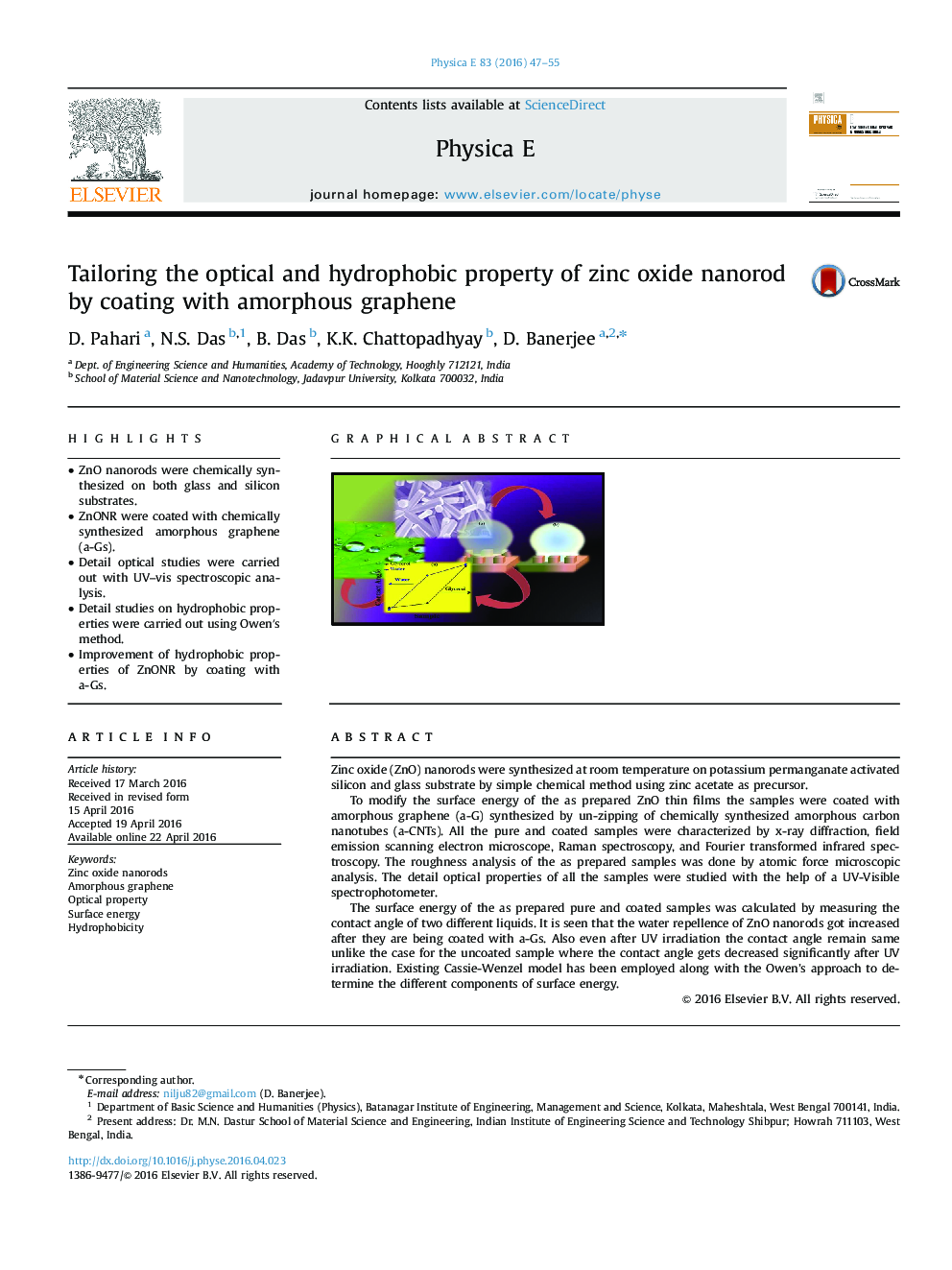| کد مقاله | کد نشریه | سال انتشار | مقاله انگلیسی | نسخه تمام متن |
|---|---|---|---|---|
| 1543744 | 1512866 | 2016 | 9 صفحه PDF | دانلود رایگان |
• ZnO nanorods were chemically synthesized on both glass and silicon substrates.
• ZnONR were coated with chemically synthesized amorphous graphene (a-Gs).
• Detail optical studies were carried out with UV–vis spectroscopic analysis.
• Detail studies on hydrophobic properties were carried out using Owen′s method.
• Improvement of hydrophobic properties of ZnONR by coating with a-Gs.
Zinc oxide (ZnO) nanorods were synthesized at room temperature on potassium permanganate activated silicon and glass substrate by simple chemical method using zinc acetate as precursor.To modify the surface energy of the as prepared ZnO thin films the samples were coated with amorphous graphene (a-G) synthesized by un-zipping of chemically synthesized amorphous carbon nanotubes (a-CNTs). All the pure and coated samples were characterized by x-ray diffraction, field emission scanning electron microscope, Raman spectroscopy, and Fourier transformed infrared spectroscopy. The roughness analysis of the as prepared samples was done by atomic force microscopic analysis. The detail optical properties of all the samples were studied with the help of a UV-Visible spectrophotometer.The surface energy of the as prepared pure and coated samples was calculated by measuring the contact angle of two different liquids. It is seen that the water repellence of ZnO nanorods got increased after they are being coated with a-Gs. Also even after UV irradiation the contact angle remain same unlike the case for the uncoated sample where the contact angle gets decreased significantly after UV irradiation. Existing Cassie-Wenzel model has been employed along with the Owen's approach to determine the different components of surface energy.
Figure optionsDownload as PowerPoint slide
Journal: Physica E: Low-dimensional Systems and Nanostructures - Volume 83, September 2016, Pages 47–55
